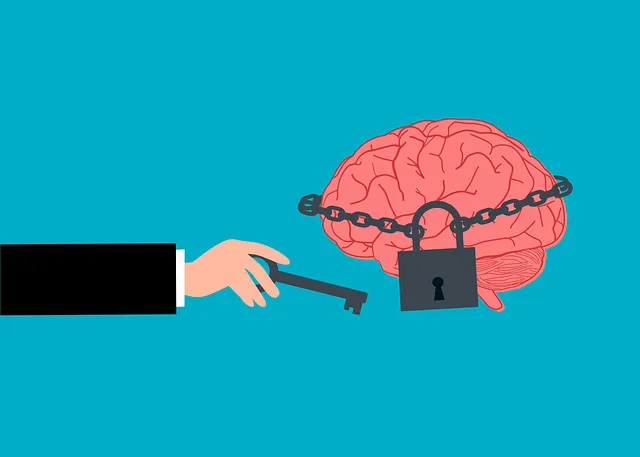Longmont: Navigating Mental Wellness Podcasts for Service Access
Before launching a mental wellness podcast for Longmont residents, conduct thorough research, focusi…….
In today’s fast-paced world, access to quality mental health services is more critical than ever. Longmont, a thriving community in Colorado, has recognized this need and implemented innovative strategies to ensure its residents receive the care they deserve. This article delves into the intricacies of ‘Longmont: How to Get Mental Health Services Through Kaiser’, exploring a comprehensive approach to addressing mental wellness within the region. By examining various aspects, from historical context to technological advancements, we aim to provide valuable insights for both residents and those interested in replicating similar models worldwide.
Definition: ‘Longmont: How to Get Mental Health Services Through Kaiser’ refers to a collaborative initiative between the City of Longmont, local healthcare providers, and insurance companies, particularly Kaiser Permanente, to streamline access to mental health care for all residents. This program aims to combat the growing mental health crisis by integrating various services, ensuring affordability, and promoting community engagement.
Core Components:
Community Partnerships: The initiative fosters strong alliances between local government, schools, community centers, and healthcare organizations like Kaiser Permanente. These partnerships ensure a multi-faceted approach, addressing mental health needs across different demographics.
Access to Care: A primary focus is making mental health services accessible and affordable. This involves reducing financial barriers by offering sliding fee scales, accepting various insurance plans (including Kaiser), and providing community-based outreach programs.
Comprehensive Services: The program encompasses a wide range of mental health services, including individual therapy, group counseling, crisis intervention, medication management, and specialized treatments for conditions such as anxiety, depression, trauma, and substance use disorders.
Public Education and Awareness: Increasing awareness about mental health is vital. Longmont’s initiative includes public education campaigns, workshops, and seminars to reduce stigma, promote early intervention, and encourage individuals to seek help.
Historical Context:
The concept of accessible mental healthcare has evolved over the years, driven by increasing recognition of mental health as a vital component of overall well-being. Longmont’s approach is rooted in this global movement towards de-stigmatizing mental illness and ensuring equitable access to care. Historically, mental health services were often limited to traditional inpatient settings, but community-based initiatives like Longmont’s have emerged as powerful models for the 21st century.
The ‘Longmont Model’ has garnered international attention, with many cities worldwide adopting similar strategies to address mental health challenges. Here’s a glimpse into its global impact:
North America: Cities like Seattle, Los Angeles, and Toronto have implemented comprehensive mental health initiatives inspired by Longmont. These programs often involve partnerships between local governments, healthcare providers, and insurance companies to improve access and reduce costs.
Europe: In countries such as the UK, Germany, and France, there’s a growing trend of integrating mental health services into primary care systems, mirroring Longmont’s approach of making mental healthcare a community priority.
Asia: Cities in Japan, South Korea, and China are exploring community-based solutions, including mobile apps for mental health support, which align with the digital-focused aspects of Longmont’s strategy.
Key Trends:
Community Integration: A global shift towards integrating mental health services into primary care and community settings is evident. This approach reduces barriers to access and promotes early intervention.
Digital Health Solutions: The use of technology, including mobile apps, online therapy platforms, and telemedicine, is on the rise, offering remote access to mental health services, especially in underserved areas.
Collaborative Partnerships: Multi-sectoral partnerships between healthcare providers, governments, schools, and community organizations are becoming the norm, ensuring a holistic approach to mental health care.
The economic impact of ‘Longmont: How to Get Mental Health Services Through Kaiser’ is multifaceted, affecting both the local economy and the broader healthcare system.
Market Dynamics: By increasing access to affordable mental health services, the initiative can lead to improved overall health outcomes for residents. This, in turn, can reduce long-term costs associated with untreated mental illnesses, such as decreased productivity and increased utilization of emergency services.
Investment Patterns: Local governments and healthcare providers have invested resources in program development, infrastructure (e.g., community centers), and staff training. These investments aim to create sustainable, efficient systems for delivering mental health care.
Economic Growth: Enhanced mental well-being within the community can contribute to economic growth by increasing productivity, reducing absenteeism from work or school, and fostering a more vibrant social fabric.
Technology plays a pivotal role in modernizing mental healthcare, and Longmont has embraced these innovations:
| Technological Advancement | Impact | Future Potential |
|---|---|---|
| Telemedicine | Allows remote access to therapy and counseling, especially beneficial for rural or underserved areas. | Expansion of telemedicine services could lead to more widespread access to specialized mental health professionals. |
| Mobile Health Apps | Provide users with tools for self-monitoring, mindfulness exercises, and access to crisis support resources. | Development of personalized app features based on individual needs can enhance treatment outcomes. |
| Artificial Intelligence (AI) | Can assist in diagnosis, treatment planning, and monitoring patient progress, reducing the workload on mental health professionals. | AI-powered chatbots and virtual therapists may become more prevalent, offering 24/7 support to patients. |
| Data Analytics | Enables tracking of mental health trends within the community, aiding in resource allocation and program evaluation. | Advanced analytics can predict potential crises and allow for proactive interventions. |
The success of ‘Longmont: How to Get Mental Health Services Through Kaiser’ is significantly shaped by the policies and regulations governing healthcare delivery:
Health Insurance Portability and Accountability Act (HIPAA): Ensures patient privacy and data security, allowing for safe sharing of information between providers and insurance companies.
Mental Health Parity Laws: These laws mandate equal coverage for mental health services as compared to physical health conditions, ensuring affordable access through insurance plans like Kaiser Permanente.
Community Mental Health Services Act (CMHSA): Provides federal funding and guidelines for community-based mental health services, supporting the initiative’s goal of enhancing local resources.
Local Ordinances: Longmont may have implemented additional policies to support its mental health initiatives, such as zoning regulations for healthcare facilities or public education mandates.
Despite its many successes, the program faces certain challenges:
Stigma and Awareness: While public awareness campaigns help, stigma surrounding mental illness can still deter individuals from seeking help. Continuous education and advocacy are necessary to foster a supportive community environment.
Resource Allocation: Ensuring adequate funding and resources for mental health services is an ongoing challenge. Balancing these needs with other community priorities requires strategic planning and collaboration.
Access in Rural Areas: While Longmont’s initiative focuses on community integration, providing accessible services in more rural or remote areas within the region remains a consideration.
Solutions and Strategies:
Community Engagement: Involving residents actively in program development and decision-making can help address stigma and ensure services meet local needs.
Partnerships with Schools: Collaborating with educational institutions to integrate mental health education and support services can early intervention and prevention.
Diversifying Service Delivery: Offering a range of service delivery models, including virtual and community-based options, improves accessibility for diverse populations.
This center is a flagship example of successful collaboration. It provides a one-stop shop for mental health services, housing individual therapy rooms, group counseling spaces, and a crisis intervention area. The center’s design encourages community engagement, with regular workshops, support groups, and educational seminars held on-site. This holistic approach has led to improved outcomes and increased satisfaction among residents.
Longmont Public Schools implemented a program where mental health professionals are embedded in schools. This initiative allows for early identification of mental health issues and provides immediate support to students. Regular training sessions for staff and parents further enhance the school’s capacity to address mental wellness. The program has shown significant improvements in student attendance and academic performance.
A group of local tech entrepreneurs developed a mobile app, ‘Longmont Mind’, offering a digital support network for residents. The app includes resources, mindfulness exercises, and access to a community forum where users can share experiences and advice. This innovative approach has been particularly successful in reaching younger generations and providing immediate support during crises.
As Longmont continues to navigate the ever-evolving landscape of mental healthcare, several growth areas and emerging trends are worth noting:
Personalized Care: Using technology and data analytics, mental health professionals can tailor treatment plans to individual needs, improving outcomes and patient satisfaction.
Integrative Healthcare: Combining traditional mental health services with alternative therapies like yoga, meditation, and art therapy offers comprehensive care that addresses the whole person.
Youth Mental Health: Given the increasing rates of youth anxiety and depression, focusing on early intervention and prevention strategies within schools and community settings is crucial.
Cultural Competence: Ensuring cultural sensitivity and responsiveness in mental health services is essential for building trust and improving access among diverse communities.
‘Longmont: How to Get Mental Health Services Through Kaiser’ represents a comprehensive, collaborative approach to addressing mental wellness within a community. By integrating various services, leveraging technology, and fostering partnerships, Longmont has set a powerful example for cities worldwide grappling with mental health challenges. As the global landscape continues to evolve, this initiative’s focus on accessibility, community engagement, and innovative solutions will undoubtedly leave a lasting impact, leading to improved mental health outcomes for residents.
Q: How does Kaiser Permanente support Longmont’s mental health initiatives?
A: Kaiser Permanente plays a vital role by offering its extensive network of healthcare professionals and resources. They provide access to specialized therapists, psychiatrists, and support staff, ensuring a diverse range of mental health services within the community.
Q: Are there financial assistance options available for those who can’t afford therapy?
A: Absolutely! Longmont’s initiative emphasizes affordable care, and various programs are in place to assist individuals with financial barriers. These include sliding fee scales, government-funded programs (e.g., Medicaid), and community outreach clinics that offer reduced rates or free services.
Q: How can I get involved in supporting mental health initiatives in my community?
A: You can contribute by staying informed, advocating for mental health awareness, and volunteering your time to local organizations. Many initiatives appreciate donations of money, resources, or professional skills to enhance their programs and reach more individuals in need.
Q: What are some signs that indicate a person needs professional help for mental health?
A: Signs may include persistent feelings of sadness or anxiety, difficulty sleeping or eating, loss of interest in activities once enjoyed, increased irritability or anger, and thoughts of self-harm. If you or someone you know exhibits these or similar symptoms, seeking professional help is advisable.

Before launching a mental wellness podcast for Longmont residents, conduct thorough research, focusi…….

In Longmont, recognizing mental health needs is the first step towards creating a supportive self-ca…….

Kaiser in Longmont offers Social Skills Training (SST), a specialized therapy for individuals with a…….

Crafting a successful marketing strategy for a mental wellness app in Longmont requires understandin…….